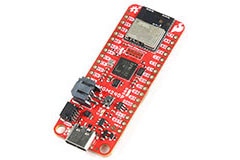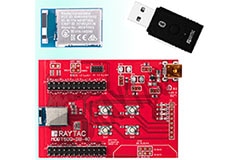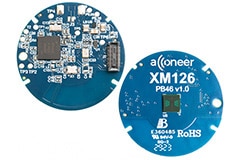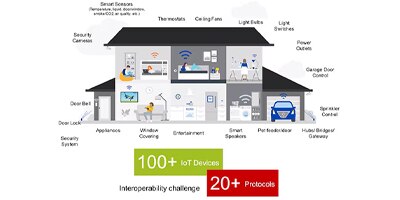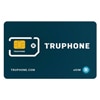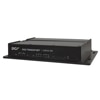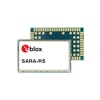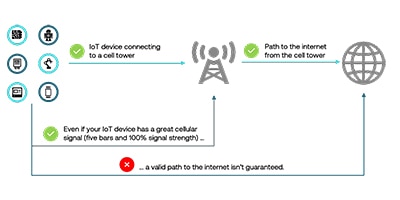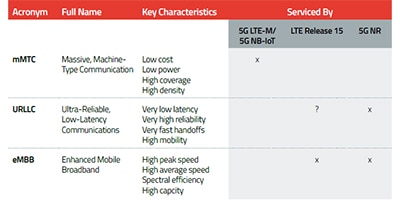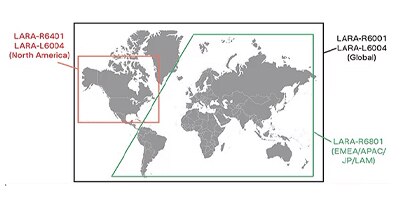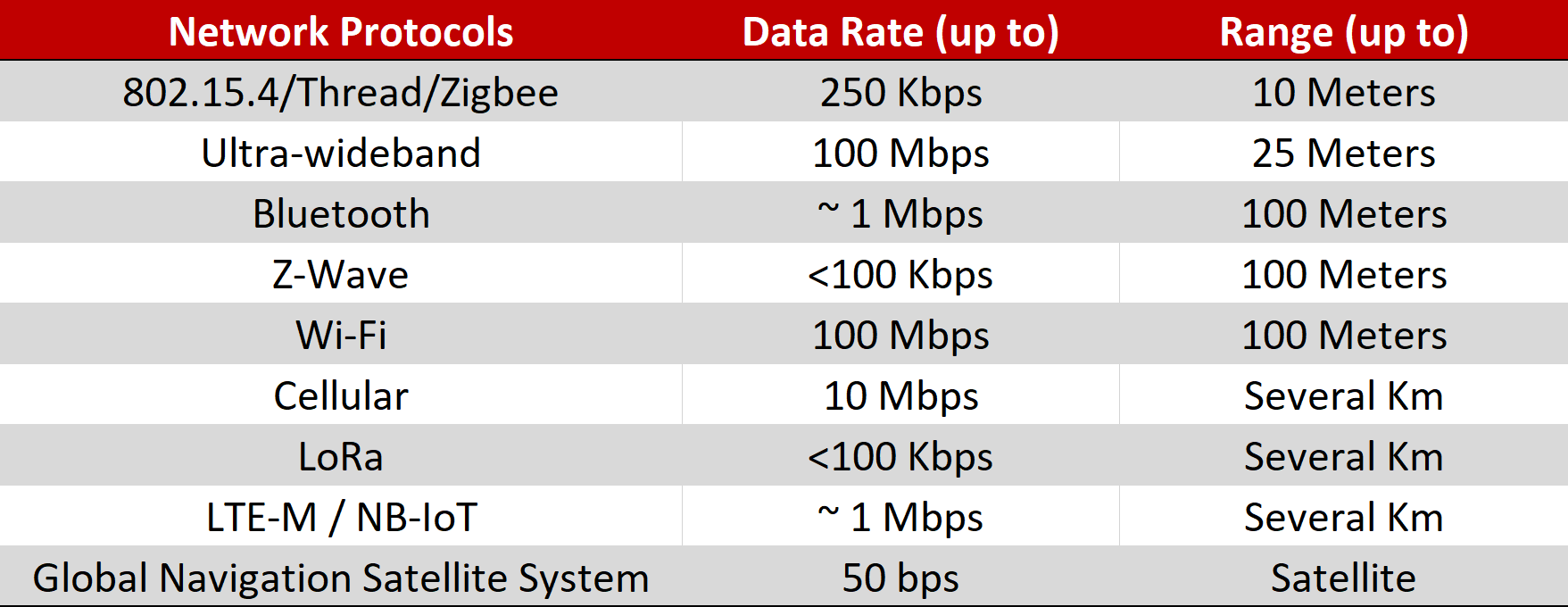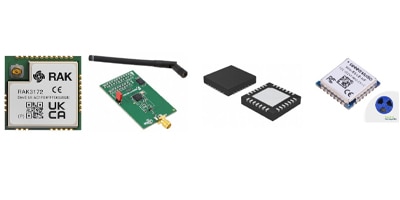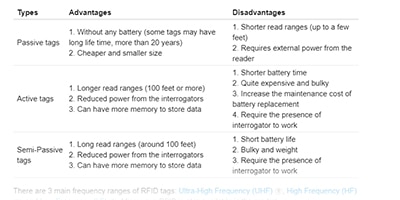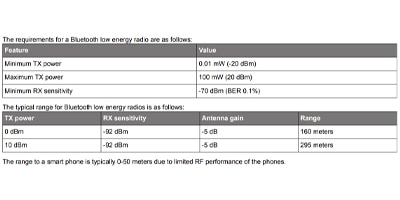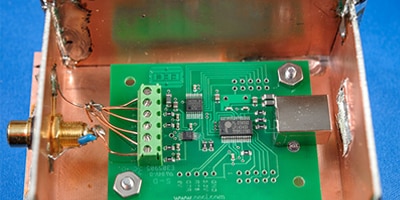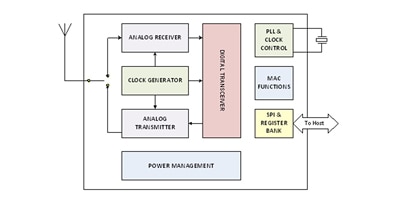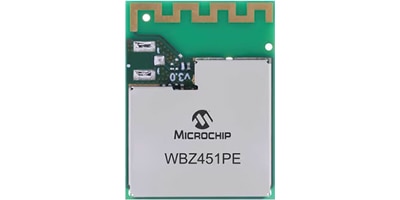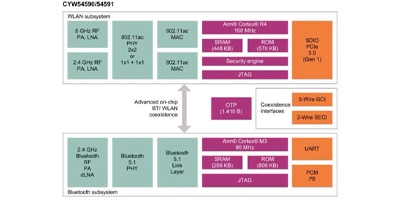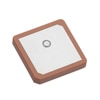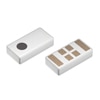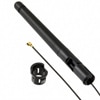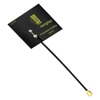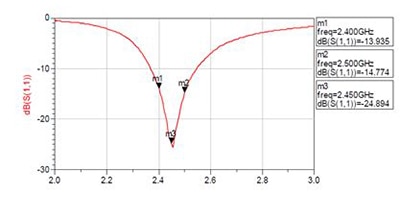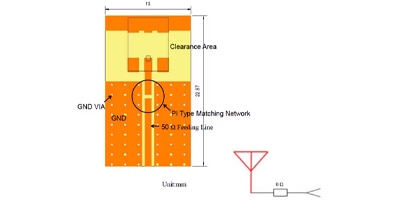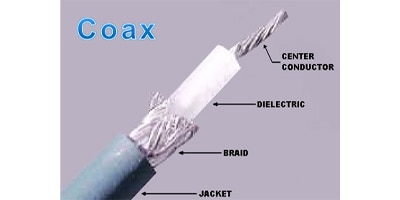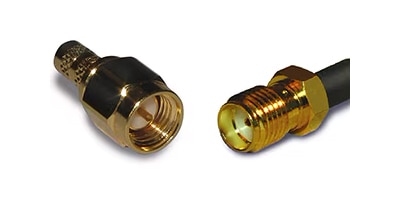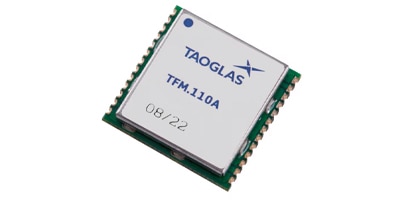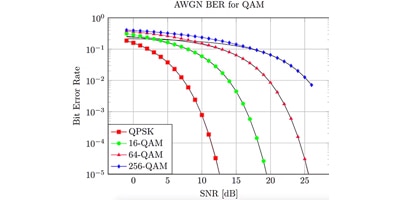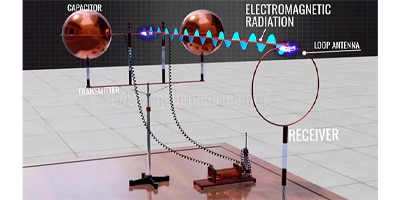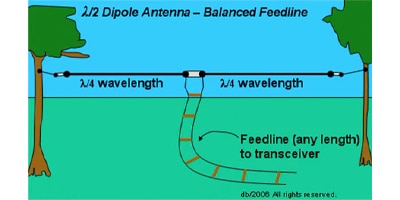目录
返回顶部
Matter
Matter 测试板
Thread 测试板
蜂窝/移动技术
性能级别
用户身份模块 (SIM) 卡和数据套餐
天线
收发器、网关和路由器
网络协议
无线个人局域网 (WPAN)
无线局域网 (LAN)
蜂窝网络
低功耗广域网 (LPWAN)
全球导航卫星系统 (GNSS)
干扰
认证和测试
管控干扰
无线收发器
收发器的外形尺寸
天线
天线集成
外置天线
内置天线
天线术语
常见天线类型
微带线计算器
dBm 瓦特转换器
射频连接器和电缆组件
常见射频连接器
射频同轴电缆组件
射频前端
前端芯片
前端组件
射频无源器件
衰减器
平衡不平衡转换器(巴伦转换器)
产品
服务
无线解决方案
射频 (RF) 产品主要用于无线通信。在无线技术中,有一些共同的主题适用于广泛的产品类别,如 Matter、蜂窝、网络协议、干扰和安全。在无线产品分类中,最先提到的应该是收发器和天线。

【无线通信小百科系列】无线通信技术概览 | DigiKey
视频主要介绍无线通信技术的基本原理、发展历程、常用无线通信技术(Wi-Fi、蓝牙、物联网、蜂窝通信)、应用场景、无线通信技术的未来。

【无线通信小百科系列】通信收发模块、SoC器件 | DigiKey
构建一个无线通信系统是相当复杂的一个任务,一个方案通常会涉及到数字与模拟信号的转换、RF射频设计、协议栈和无线通信标准等专业知识,而且硬件设计和系统调试都需要专门的开发环境和设计经验。所以目前市场上普遍应用的是无线通信模块,以及SoC单芯片系统解决方案。

【无线通信小百科系列】WiFi | DigiKey
视频主要介绍什么是Wi-Fi、WiFi技术的工作原理、Wi-Fi标准的发展历程、WiFi的辐射问题、典型WiFi模块的功能、以及WiFi模块的实验演示
Matter
Matter 是一种无线连接标准,旨在使家庭自动化和物联网 (IoT) 设备能够跨越不同制造商和/或网络协议,实现轻松连接、通信和运行。Matter 由连接标准联盟(Connectivity Standards Alliance,CSA)开发和维护,该联盟的前身是 ZigBee 联盟,由 Apple、Amazon 和 Google 等公司牵头运营。Matter 可在 Wi-Fi 和 Thread 设备上运行,具有广泛的兼容性,消除了多个智能家居平台之间的复杂性。
 Matter 兼容设备上的 Matter 徽标,由 CSA 提供
Matter 兼容设备上的 Matter 徽标,由 CSA 提供
Matter 能解决什么问题?查看解答
在 Matter 推出之前,智能家居自动化市场非常分散,Amazon Alexa、Apple HomeKit、Google Home 和 Samsung SmartThings 各自为政,都有自己的无线网络标准。为了弥合智能家居生态系统的割裂状态,CSA 开发出一个可供所有制造商使用的全新互操作框架。
Matter 第 1 版规范仅适用于简单的设备,如灯泡、开关、锁、家居供暖、通风和空调控制器以及家庭娱乐设备。Matter 的未来版本有望集成更复杂的设备,如机器人吸尘器、家庭传感器和大型家用电器。
2023 年 10 月发布的 Matter 1.2 版扩展了该标准,可集成更复杂的设备,如机器人吸尘器、智能家居环境传感器以及洗衣机、洗碗机和冰箱等大型家用电器。
Matter 和 Thread 之间有什么区别? 查看解答
- Matter 是智能家居生态系统中设备之间的通信方式
- Thread 是设备在网络中的连接方式
Matter 在 OSI 模型的应用层运行,为智能家居开发者提供了一个抽象开发层,使他们只需为 Matter 编写一次代码,就能知道代码能在 Apple、Amazon 和 Google 设备上正常运行。Thread 在 OSI 模型的下 6 层运行(自表示层到物理层)。
Thread 是一种基于 IEEE 802.15.4 规范的低功耗无线协议,允许多个不同的设备组成一个自愈式网状网络,其覆盖范围为几百米,最多可连接 250 个设备。Thread 一种基于现有无线标准的开放标准。
虽然 Matter 可以使用 Thread,但并非仅限于 Thread。Matter 可以使用 IPv6 技术,包括 Wi-Fi、低功耗蓝牙或以太网。
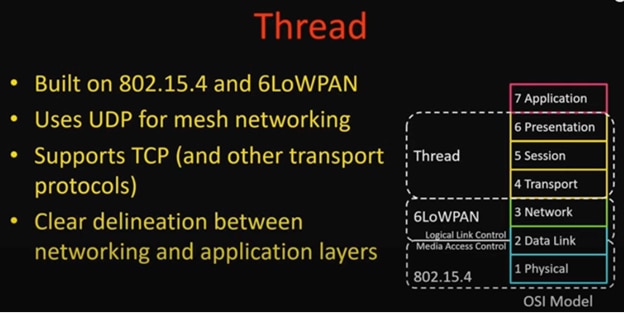 Thread 的 OSI 模型操作层。(图片来源:DigiKey - 什么是 Thread?)
Thread 的 OSI 模型操作层。(图片来源:DigiKey - 什么是 Thread?)
Matter 测试板
Thread 测试板
![]()
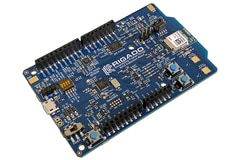
u-blox 的 R41Z 模块是一种高度集成的超低功耗模块,可提供 IEEE 802.15.4 Thread 和低功耗蓝牙 (BLE) 射频连接,实现便携式极低功耗的嵌入式系统。
![]()
![]()
Nordic Semiconductor 的 Nordic Thingy:53 利用集成的运动、声音、光线和环境传感器来帮助构建概念验证和原型开发。

Beetle ESP32 C6迷你开发板介绍
Beetle ESP32-C6 是一款基于 ESP32-C6 芯片设计的迷你体积的 Arduino 低功耗物联网开发板,该开发板仅有硬币大小(25*20.5mm)。
蜂窝/移动技术
DigiKey 与顶级无线供应商合作提供蜂窝服务,推出广泛的产品和服务组合来支持无线蜂窝解决方案。请考虑为具有以下特点的项目使用蜂窝技术作为无线解决方案:
- 覆盖范围大
- 需要定位服务或精确位置数据
- 要求安全传输数据
性能级别
高数据速率 - Cat-6、Cat-9、Cat-12:适用于高功率、高数据速率设备、消费类移动设备、基站和范围扩展器
低数据速率 - Cat M1、NB-IoT、LTE-M:这些运行类别通常用于低功耗物联网或移动设备,如智能仪表、传感器节点和分布式机器通信。
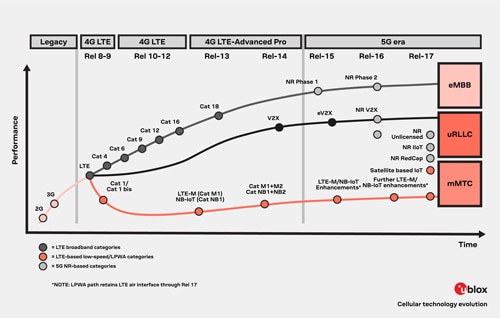 图表来源:u-blox
图表来源:u-blox
用户身份模块 (SIM) 卡和数据套餐
提供蜂窝数据预付费和包月套餐:
天线
您可以选择现成的天线,或者使用 Taoglas 提供的天线生成器服务定制天线:
收发器、网关和路由器
这些设备会协商数据传输,并决定数据在网络中的传输方式:
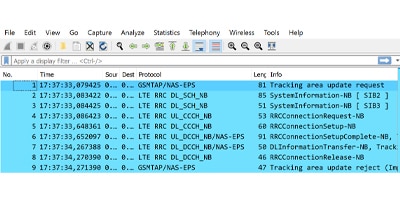
基于高通模块(2G/3G/4G、LTE-M、NB-IoT)的蜂窝layer3跟踪可能性
我希望分享一款个人比较喜欢的工具,而且我认为对于许多使用基于高通芯片组的蜂窝模块(例如,来自Thales的EXS82和ENS22,来自Quectel的BG95、BG96,或uBlox Sara R410等)的用户而言,这款工具都非常实用。
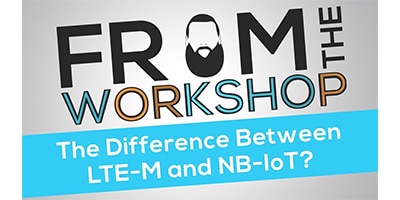
一页纸让你了解LTE-M (CAT-M1)与NB-IoT (NB-1)
LTE-M — 长期演进机器通信(L ong Term Evolution Machine type communication)(M1类)
网络协议
无线个人局域网 (WPAN)
- 未说明是低功耗蓝牙(或 BLE)的蓝牙通常指早期蓝牙(有时称为经典蓝牙)。这是一种短距离无线标准,用于短距离传输数据。
- 低功耗蓝牙 (BLE) 进行了低功耗优化,最常用于健身追踪器和医疗设备等电池容量小、功耗要求低的设备。
- 脉冲无线电超宽带 (IR-UWB) 是一种使用高频宽带传输的无线技术,其工作频率范围为 3.1 GHz - 10.1 GHz,每个无线电信道的带宽为 500 MHz。发射持续时间很短,利用雷达原理充当位置和测距传感器。
- Zigbee 是一种基于 IEEE 802.15.4 规范的 2.4 GHz 网状网络,可形成小型个人区域网。这种网络不象蓝牙或 Wi-Fi 等其他网络那样复杂或昂贵,但覆盖范围通常较小。这种网络通常用于低功耗、低数据传输速率的设备,如家庭自动化、物联网设备,甚至某些工业自动化网络。
- Z-wave 是另一种面向家庭自动化和智能设备的无线协议。Z-wave 是一种 sub-1 GHz 网状网络协议,用于家庭自动化设备,具有低数据传输速率和低功耗特性。Z-wave 由 Silicon Labs 拥有和开发。
- 6LoWPAN 是“IPv6 over Low-Power Wireless Personal Area Networks(低功耗无线个域网 IPv6 传输协议)”的缩写,是一种无线网络协议,支持在无线网络上使用互联网协议 (IP) 6 版,以提高网络性能和功能。虽然该协议比其他方案复杂,但支持采用开放式 IP 标准进行通信。
- Thread 基于 6LoWPAN 和 802.15.4,可用作物联网 (IoT) 产品的低功耗网状网络协议。常与 Matter 一起使用。
无线局域网 (LAN)
- Wi-Fi 是最流行、最广泛的无线协议之一,其功能和频率范围在不断扩大,以适应物联网设备、低功耗应用和短距离高数据速率设备,使其成为可集成到智能设备中的一个非常受欢迎的协议。
蜂窝网络
- 高数据速率蜂窝网络通常称为 4G 网络,是高速、高数据速率无线传输的完美选择。该技术虽然对传输功率的要求较高,但也有几种专为物联网和“机器对机器”应用设计的低功率版本。
- 5G RedCap(Reduced Capacity 的缩写)是一种基于 5G 的无线标准,旨在填补高速、高数据网络与低功耗、低数据速率物联网应用之间的技术空白。与完整的 5G 硬件标准相比,5G RedCap 有一些不同,如带宽更窄、天线数量更少、发射功率更低等。其优点是功耗更低、硬件要求更低,因此适用于可穿戴设备、物联网和智慧城市。
低功耗广域网 (LPWAN)
- LoRa——(Long Range 的缩写)是由 SemTech 开发的一种专有扩频调制方案。该方案的特点是发射距离远(约 3 英里或 5 公里)和数据传输率低(约 1 kbps)。其在固定信道带宽内以低数据传输速率换取高灵敏度。该方案实现了可变数据传输速率,使系统设计者可以在数据传输速率、发射距离或功率之间进行平衡。
- NB-IoT ——也称为 Cat-NB1,是一种窄带技术标准。该标准不使用传统的蜂窝 LTE 物理层,但可与其他 LTE 设备共存,并共享部分相同频段。该标准适用于要求低数据吞吐量和长距离的静态、低功耗应用。
- LTE-M——又称 Cat-M1,专为需要中等数据吞吐量的低功耗蜂窝应用而设计。与普通 LTE 相比,该标准的带宽更窄,因此传输距离更远,但数据吞吐量较小。LTE-M 非常适合要求低功耗、低延迟和移动性的中等吞吐量应用。
- Wi-Fi HaLow™——基于 IEEE 802.11ah 无线标准的 Wi-Fi 认证产品,在 sub-1 GHz 频段下运行。与传统 Wi-Fi 相比,其传输距离更远,功耗更低。虽然仍保留了与 Wi-Fi 网络相同的所有功能,如安全性和易于部署等,但 sub-1 GHz 频段的长距离传输使其成为现代物联网和其他长距离应用的完美选择。
- Dect NR+——是一种免许可非蜂窝网状网络无线标准,设计用于需要超低延迟和数据吞吐量的大规模机器对机器通信。通过在全球许可豁免的 1.9 GHz 频段下运行,用户无需基站和信号塔等现有蜂窝基础设施,即可在没有蜂窝供应商的情况下运行自己的专属网络,从而大大降低了部署成本。
干扰
如果你曾听过收音机里的静电噪音、经历过无线耳机突然出现杂音,或是遇到过无线传感器的数据包丢失,那么你就亲身体验过干扰的存在。
干扰可能会完全阻碍信号接收,直到其被消除为止;干扰也可能仅造成信号的暂时丢失,也可能影响无线信道中传输数据的质量或数量。
认证和测试
要确保无线电磁频谱使用的安全性与经济性,应首先确保公平、负责任地使用;各国政府要求所有新设计产品在上市前必须通过严格的合规认证及电磁兼容性测试。在美国,联邦通信委员会 (FCC) 负责测试和认证,确保设备否符合电磁兼容性 (EMC) 标准,或者产品既能保证其电子元件内部正常工作,又不会造成内部和外部干扰。
管控干扰
目前,有许多种方法可以用来消除或减少外部干扰。
屏蔽技术:射频屏蔽罩和射频垫圈可确保机柜免受射频干扰 (RFI) 和电磁干扰 (EMI) 的侵扰
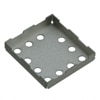 射频屏蔽罩——射频屏蔽技术是减少传入干扰或防止无线电辐射泄漏的最常用方法之一。射频屏蔽罩旨在阻断或导离干扰信号,从而保护极易受干扰的元器件。
射频屏蔽罩——射频屏蔽技术是减少传入干扰或防止无线电辐射泄漏的最常用方法之一。射频屏蔽罩旨在阻断或导离干扰信号,从而保护极易受干扰的元器件。
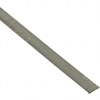 RFI 和 EMI — 接触件、指形簧片和垫圈——包括可用来密封外罩缝隙的泡沫垫圈。
RFI 和 EMI — 接触件、指形簧片和垫圈——包括可用来密封外罩缝隙的泡沫垫圈。
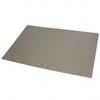 RFI 和 EMI — 屏蔽和吸收材料——包括可以反射或吸收干扰信号的板材或卷材。
RFI 和 EMI — 屏蔽和吸收材料——包括可以反射或吸收干扰信号的板材或卷材。
定向天线可精准引导、限制电磁干扰,抑制其向不需要的方向传播。
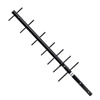 定向天线——定向天线是减少外部干扰源的又一种选择。通过只允许从特定方向接收信号,定向天线可过滤掉传输路径上的干扰源。不过,因其体积较大,定向天线更适合固定安装,但需确保信号接收路径可预测。
定向天线——定向天线是减少外部干扰源的又一种选择。通过只允许从特定方向接收信号,定向天线可过滤掉传输路径上的干扰源。不过,因其体积较大,定向天线更适合固定安装,但需确保信号接收路径可预测。

铁氧体片可以改善NFC和无线充电耦合?
运用了NFC(近场通信)、RFID(射频识别)或无线充电传输的器件都使用了线圈,当线圈彼此紧靠时,会产生磁力耦合,并使数据和/或电力在两个线圈之间传输。
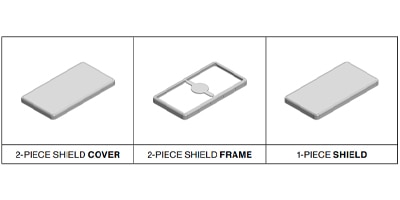
Masach Drawn-Seamless EMI/RFI 屏蔽系列配置
Masach Tech 的Drawn-Seamless EMI/RFI 屏蔽系列具有两种屏蔽配置方案,分别是单件式屏蔽和由盖和框架配置组成的两件式屏蔽。
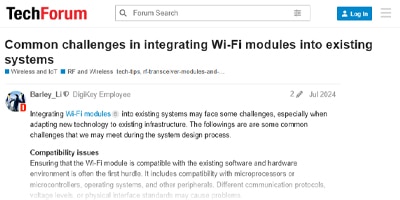
Common challenges in integrating Wi-Fi modules into existing systems
Integrating Wi-Fi modules into existing systems may face some challenges, especially when adapting new technology to existing infrastructure.
无线收发器
收发器是无线发射器和接收器电路在一个封装或设备中的组合器件。使用收发器的产品包括手机、对讲机等双向无线电设备、HAM 无线电设备以及通过物联网连接的设备。
收发器的外形尺寸
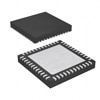 集成电路 (IC)——包含形成和解码无线信号所需的电路。然而,由于其本身只是集成电路,因此在传输信号之前还需要设计电路板并进行组装。对于新手而言集成电路非理想之选,但有助于实现紧密的系统集成
集成电路 (IC)——包含形成和解码无线信号所需的电路。然而,由于其本身只是集成电路,因此在传输信号之前还需要设计电路板并进行组装。对于新手而言集成电路非理想之选,但有助于实现紧密的系统集成
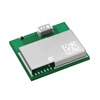 模块和调制解调器——可集成到无线设计中的封装。一些模块集成了射频屏蔽和电源管理功能,可减少所需的额外设计
模块和调制解调器——可集成到无线设计中的封装。一些模块集成了射频屏蔽和电源管理功能,可减少所需的额外设计
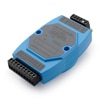 成品级收发器单元——即用型设备和单元,可快速建立无线网络。这种成品级收发器可随时接通电源并连接到网络,避免了无线网络部署过程中的繁琐工作,是连接传感器或设置数据链路时即插即用操作的理想之选。
成品级收发器单元——即用型设备和单元,可快速建立无线网络。这种成品级收发器可随时接通电源并连接到网络,避免了无线网络部署过程中的繁琐工作,是连接传感器或设置数据链路时即插即用操作的理想之选。
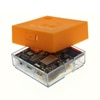 开发板和套件——用于实验和原型开发,是创客踏入射频开发领域的最佳伙伴。DigiKey 拥有来自全球最受欢迎制造商和供应商的现货产品,涵盖所有频率、无线频段和应用,能够提供进行实验以及将创意从原型转化为生产所需的一切资源。
开发板和套件——用于实验和原型开发,是创客踏入射频开发领域的最佳伙伴。DigiKey 拥有来自全球最受欢迎制造商和供应商的现货产品,涵盖所有频率、无线频段和应用,能够提供进行实验以及将创意从原型转化为生产所需的一切资源。

Digi XK3-Z8S-WZM XBEE模块产品信息
Digi XBee3 Zigbee Mesh套件提供了一种学习如何使用Digi的XBee3系列射频模块来进行设备连接以及基于Zigbee的Mesh网络连接的好方法。
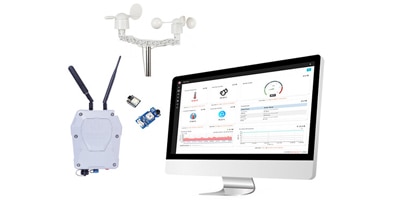
使用 Seeed 的 LoRa-E 5模块, 为 LoRaWAN 网络开发风速/风向传感器
该项目涵盖了开发基于Seeed LoRa-E5的Arduino风速/方向传感器的过程,并将其安装在能够连接到DigiKey公司总部大楼屋顶气象平台的室外外壳中。

NRF9151-DK-VIOT - LTE-M/NB-IoT/GNSS/DECT NR+ 开发套件入门
Nordic 的 NRF9151-LACA-R7 和 NRF9151-LACA-R 是 DigiKey 的新产品。
天线
天线是无线电信号的发射和接收设备,也是自由空间中的无线电波与设备中通过电线或印制线流动的电流之间的接口。天线通常被调谐至一定的工作频率,但有些天线可在宽频带(较宽的频率范围)或各种频率下工作,但需注意,即使天线支持多频段工作,也不能假定在中间所有的频率下均有效工作。
天线集成
在设计中集成天线极其困难,其中的许多因素都会影响天线集成。我们无法穷尽所有影响因素,但以下所列将有助于您入门。一般来说,如果设计匹配得当,则更多的金属(更大的天线)意味着更好的天线性能。
外置天线
如果采用外置天线进行设计,则有些注意事项与采用嵌入式或内置天线时有所不同。您可能需要更长的电缆才能到达最优传输点。引入电缆和连接器会在信号链中产生损耗,因此应进行规划,以使这种损耗不会严重影响设计性能。外置天线的增益可能会较高,这一点也应考虑,因其可能导致设计超出可接受的认证参数范围。天线的位置、放置方式、方向以及使用的电缆类型是影响外置天线性能的关键因素。
内置天线
由于尺寸限制,通常会选择内置或嵌入式天线,这往往意味着天线的性能不如外置天线,而设计将是嵌入式天线能否充分发挥作用的关键。采用内置天线时,应首先考虑尺寸和位置,因为这将决定采用哪种天线。如果器件位于金属盒内,则内置天线很可能没有任何作用。如果天线安装在印刷电路板上,则需要确定所选天线所需的接地或元件间隙,有些天线可能位于接地平面上,有些则需要一定的接地间隙才能有效工作。
天线术语
- 增益——用于衡量天线在特定方向上的功率传输效率的参数。该参数在天线数据表上称为峰值增益或者平均增益,或者两者兼而有之。
- 天线效率——辐射功率与馈送到天线端的功率之比。效率越高,表明天线在特定频率下的性能越好。
- 电压驻波比 (VSWR)——用于衡量功率从源端经传输线至天线(负载)的传输效率。驻波比用输入功率与输出功率之比来表示,小于 2:1 即为匹配良好,驻波比越高,失配越严重。
- 天线阻抗——用于衡量施加电压时对电流的阻碍作用。该参数必须与源阻抗匹配才能通过天线高效地传输功率。大多数无线电设备的阻抗为 50 欧姆。
常见天线类型
微带线计算器
IPC-2141 走线阻抗计算器有助于简化初始设计。向该计算器中输入基本参数即可计算出符合 IPC-2141 标准的阻抗。尽管本计算器可提供基准参数,但最终设计仍需综合考量损耗、色散、铜箔粗糙度、相移等影响因素。进行最终电路分析时,可能需要一个现场求解器。
dBm 瓦特转换器
dBm 瓦特换算器 工具可用来相互换算所测功率的分贝毫瓦 (dBmW) 和瓦特 (W) 单位。
射频连接器和电缆组件
射频 (RF) 连接器是一种电气连接器,用于传输射频范围内的电信号,通常介于 20 kHz(每秒数千次)到数千兆赫兹(每秒数十亿次)之间。
射频连接器的一个关键特性是其本体内的射频屏蔽层和绝缘层,用来确保由同轴电缆形成的屏蔽连续性。
常见射频连接器
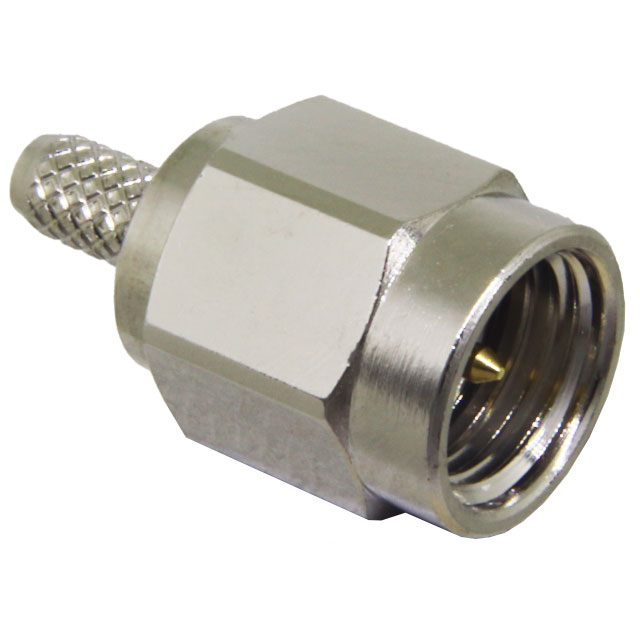 SMA(超小型 A 版)连接器——频率范围通常高达 12 GHz,但 SMA 连接器变体的频率可高达 18 GHz 或更高。在这些小型高频应用中,SMA 连接器常用于消费级微波应用,其中最著名的是 Wi-Fi 路由器天线上的 RP-SMA 连接器。
SMA(超小型 A 版)连接器——频率范围通常高达 12 GHz,但 SMA 连接器变体的频率可高达 18 GHz 或更高。在这些小型高频应用中,SMA 连接器常用于消费级微波应用,其中最著名的是 Wi-Fi 路由器天线上的 RP-SMA 连接器。
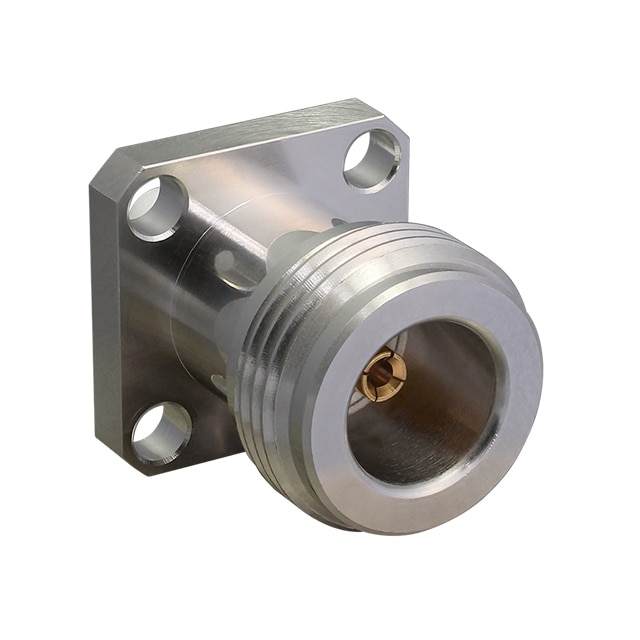 N 型连接器——以贝尔实验室 (Bell Labs) 的发明者 Paul Neill 命名,是一种用于连接同轴电缆的螺纹式射频连接器。工作频率范围高达 11 GHz,使这种不受天气影响、经久耐用的连接器成为低微波射频应用的完美选择,可户外使用且安装简单使其在问世近 80 年后仍广受欢迎。需要注意的是,N 型连接器的 50 欧姆和 75 欧姆版本不交叉兼容,插接时可能造成相互损坏。
N 型连接器——以贝尔实验室 (Bell Labs) 的发明者 Paul Neill 命名,是一种用于连接同轴电缆的螺纹式射频连接器。工作频率范围高达 11 GHz,使这种不受天气影响、经久耐用的连接器成为低微波射频应用的完美选择,可户外使用且安装简单使其在问世近 80 年后仍广受欢迎。需要注意的是,N 型连接器的 50 欧姆和 75 欧姆版本不交叉兼容,插接时可能造成相互损坏。
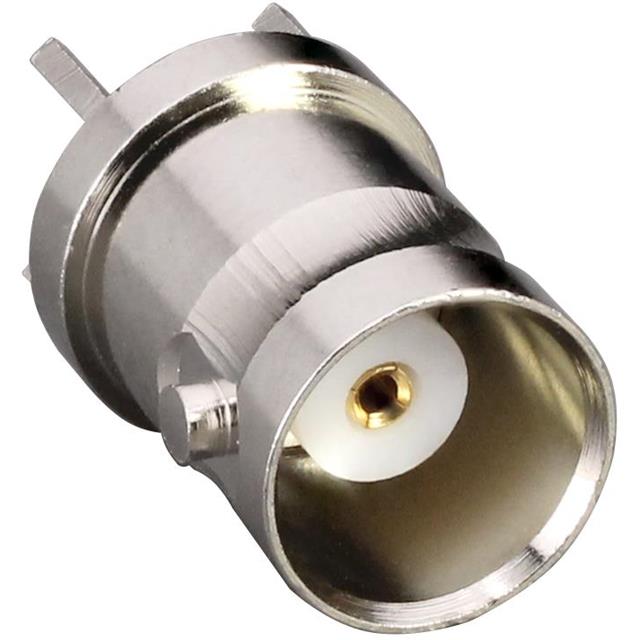 BNC 连接器——是一种采用卡口式快速锁紧结构的微型射频连接器。BNC 连接器最初在 20 世纪 40 年代用于军用无线电设备,现在已成为如视频等射频测试设备和消费电子产品的常用连接器。其工作频率通常高达 4 GHz,但在信号衰减的情况下,可达 11 GHZ。
BNC 连接器——是一种采用卡口式快速锁紧结构的微型射频连接器。BNC 连接器最初在 20 世纪 40 年代用于军用无线电设备,现在已成为如视频等射频测试设备和消费电子产品的常用连接器。其工作频率通常高达 4 GHz,但在信号衰减的情况下,可达 11 GHZ。
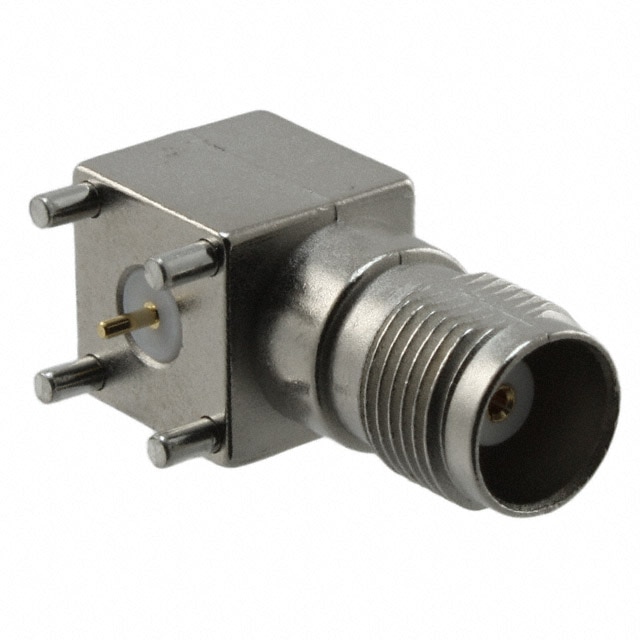 TNC 连接器——全称是 Threaded Neill-Concelman,是 BNC 连接器的螺纹版。螺纹锁紧选项可确保其所连接两端之间的连接更加稳定可靠,支持高达 11 GHz 的工作频率。尺寸小型化和耐候连接特性使 TNC 连接器在雷达和航空航天应用中广受欢迎。
TNC 连接器——全称是 Threaded Neill-Concelman,是 BNC 连接器的螺纹版。螺纹锁紧选项可确保其所连接两端之间的连接更加稳定可靠,支持高达 11 GHz 的工作频率。尺寸小型化和耐候连接特性使 TNC 连接器在雷达和航空航天应用中广受欢迎。
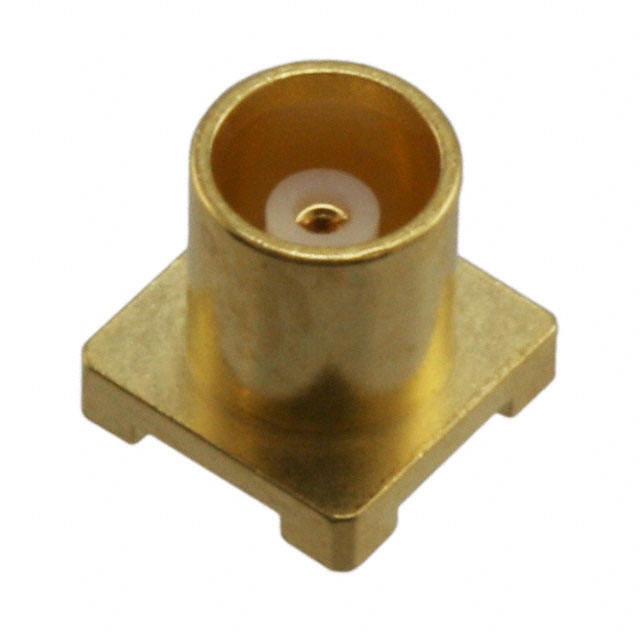 微型同轴连接器 (MCX)——内部触点和绝缘体的尺寸与 SMB 连接器相同,但其外形比后者缩小了 30%。欧洲 CECC 22220 标准已将 MCX 规定为标准化连接器。MCX 连接器采用卡扣式接口,阻抗通常为 50 Ω,具有从 DC 到 6 GHz 的宽带能力。
微型同轴连接器 (MCX)——内部触点和绝缘体的尺寸与 SMB 连接器相同,但其外形比后者缩小了 30%。欧洲 CECC 22220 标准已将 MCX 规定为标准化连接器。MCX 连接器采用卡扣式接口,阻抗通常为 50 Ω,具有从 DC 到 6 GHz 的宽带能力。
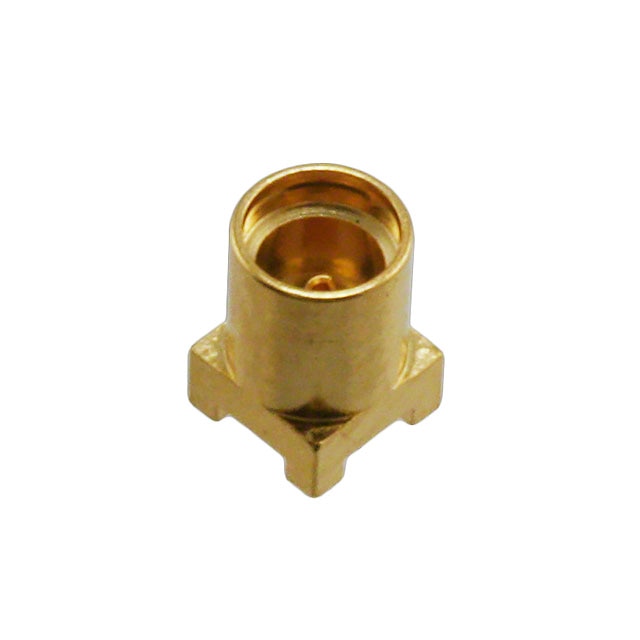 超微型同轴连接器 (MMCX)——类似 MCX 连接器,但尺寸更小。符合欧洲 CECC 22000 规范。MMCX 连接器是一种超微型连接器,采用锁扣机制(快速断开),可 360 度旋转,阻抗通常为 50 Ω。宽带能力为从 DC 到 6 GHz。
超微型同轴连接器 (MMCX)——类似 MCX 连接器,但尺寸更小。符合欧洲 CECC 22000 规范。MMCX 连接器是一种超微型连接器,采用锁扣机制(快速断开),可 360 度旋转,阻抗通常为 50 Ω。宽带能力为从 DC 到 6 GHz。
如何判断射频连接器是常规极性还是反极性?查看解答
首先确定连接器的公母:
- 公头连接器的螺纹向内朝向连接器中心
- 母头连接器的螺纹朝外
简单地说:插接时,公头连接器套在母头连接器外侧。
第二,检查中心触点。
在最简单的情况下,一对插接射频连接器的中心触点将是一个插针和一个插座式插口,分别位于互连部分的两侧。
- 在常规极性连接器中,中间连接器采用插针式触点,而母头一侧采用插座式插口。
- 反极性连接器的触点与常规连接器的触点相反
RP 公头连接器的螺纹向内,采用母头插座用于中心触点。
RP 母头连接器的螺纹朝外,采用公插针用于中心触点。
如需详细了解连接器及其公母的情况,请访问互连应用和技术页面。
射频同轴电缆组件
射频设计中最常用的电缆是同轴电缆。
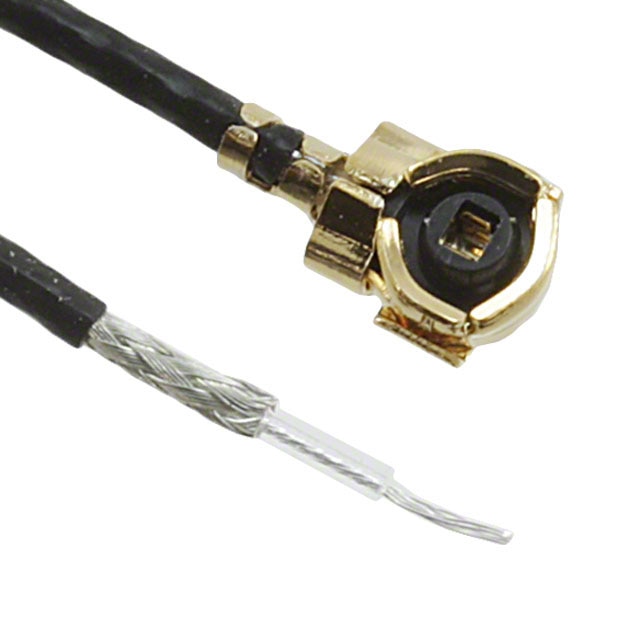 连接同轴电缆的普通 U.FL 射频连接器
连接同轴电缆的普通 U.FL 射频连接器
射频前端
射频前端指无线电接收器的接收天线和混频器级之间的电路元件和组件的集合。无线电接收器的这一级接收输入的无线电信号,过滤不必要的外部信号噪音,放大目标信号,并将无线电频率转换为无线电接收器中的其他电路可以使用的较低频率。
前端芯片
前端解决方案通常在单个 IC(集成电路)中包含以下“前端组件”部分的多个组件。
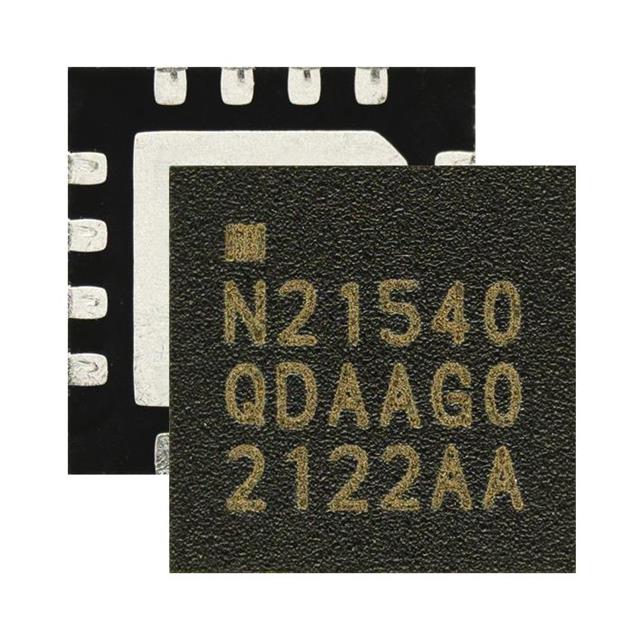 现代射频电路通常将前端电路组件集成到单芯片封装中,如图所示
现代射频电路通常将前端电路组件集成到单芯片封装中,如图所示
前端组件
射频前端组件包含许多不同的级,但通常分为 4 大组器件:
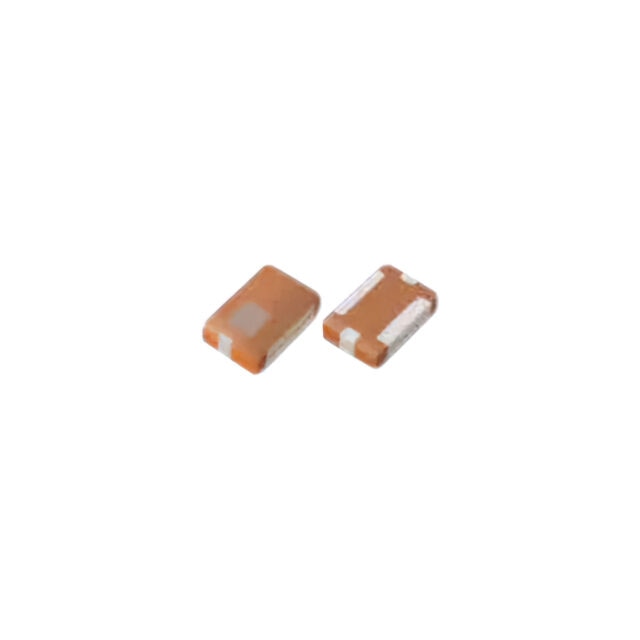 带通射频滤波器,用于接入来自接收天线的无线电信号。该滤波器用于将所需信号沿处理链传递,减少带外信号对后续处理级的压制或干扰。
带通射频滤波器,用于接入来自接收天线的无线电信号。该滤波器用于将所需信号沿处理链传递,减少带外信号对后续处理级的压制或干扰。
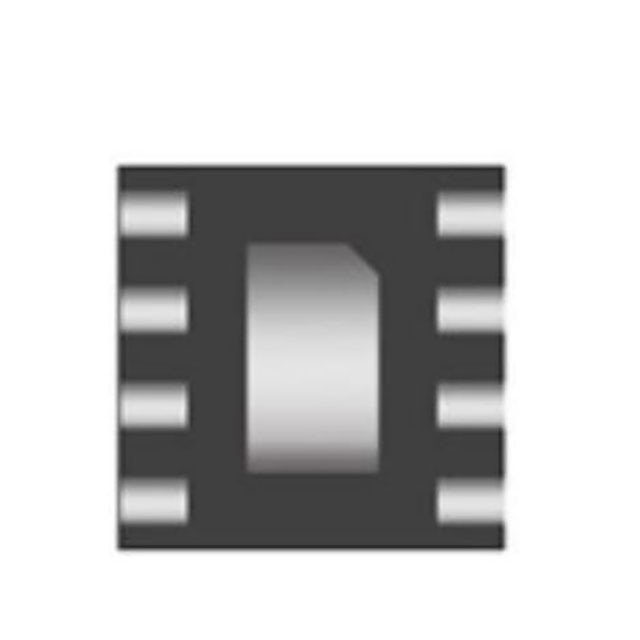 射频放大器,通常称为低噪声放大器,用于放大微弱信号,但不会增加额外噪声。
射频放大器,通常称为低噪声放大器,用于放大微弱信号,但不会增加额外噪声。
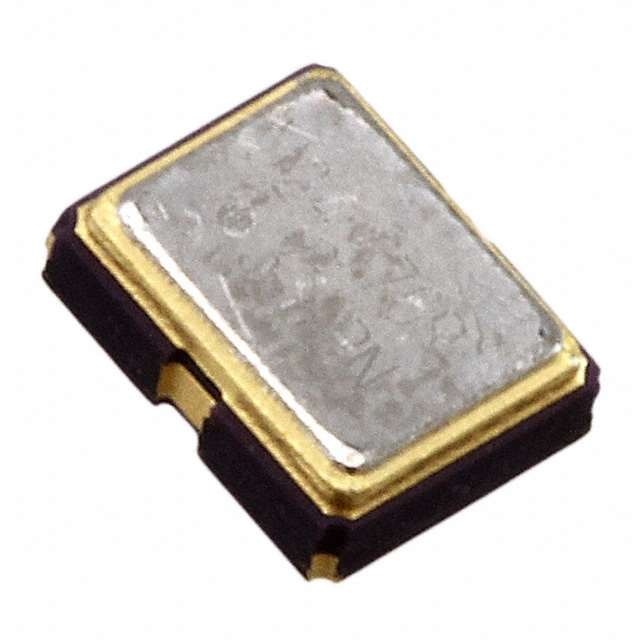 本地振荡器可生成稳定的射频信号。本地振荡器可设计为固定频率或可调频率,但必须具有稳定性和准确性,因为由其生成的射频信号在进一步处理前会首先用于混频器级。
本地振荡器可生成稳定的射频信号。本地振荡器可设计为固定频率或可调频率,但必须具有稳定性和准确性,因为由其生成的射频信号在进一步处理前会首先用于混频器级。
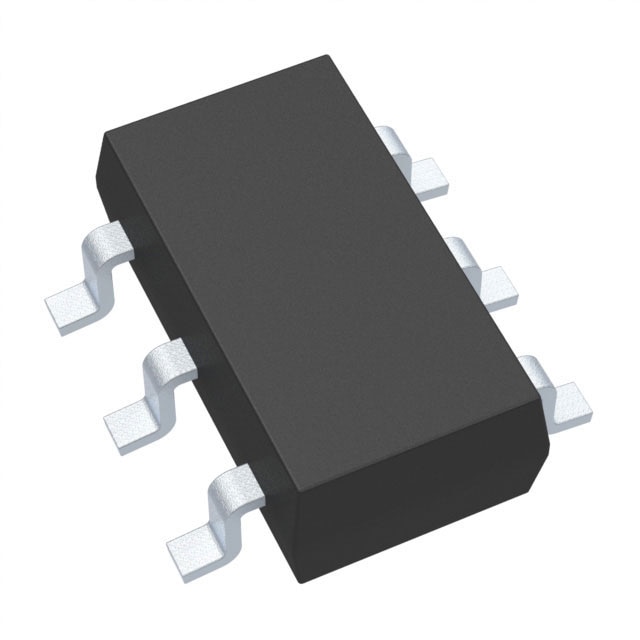 混频器级。在该级中,由带通滤波器接收的并经其滤波后的射频信号与本地振荡器的信号进行混频。混频器的输出结果是这两种信号的组合,从而简化了信号的处理、滤波和提取。
混频器级。在该级中,由带通滤波器接收的并经其滤波后的射频信号与本地振荡器的信号进行混频。混频器的输出结果是这两种信号的组合,从而简化了信号的处理、滤波和提取。
 低噪声放大器又称 LNA,是一种射频电路器件,用于放大低功率信号,但不会增加不必要的噪声或干扰。LNA 设计用于最大限度地减少放大信号中的干扰。
低噪声放大器又称 LNA,是一种射频电路器件,用于放大低功率信号,但不会增加不必要的噪声或干扰。LNA 设计用于最大限度地减少放大信号中的干扰。
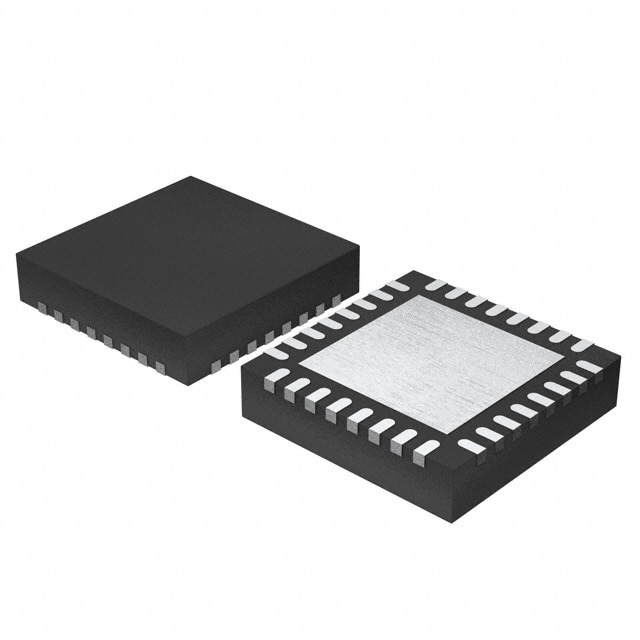 功率放大器又称功放 ,是一种放大电路,用于接收低功率射频信号并将该信号放大为适合经由天线传输的大功率信号。
功率放大器又称功放 ,是一种放大电路,用于接收低功率射频信号并将该信号放大为适合经由天线传输的大功率信号。
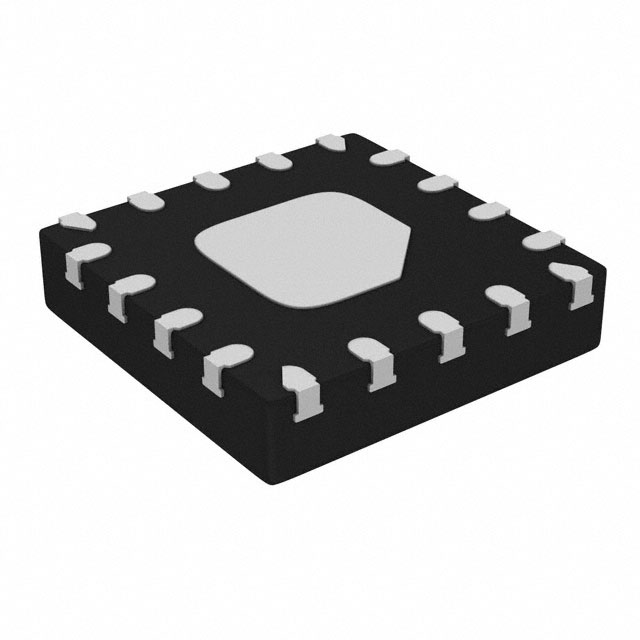 射频开关是一种可以在信号链之间切换射频信号的器件。与普通电子开关一样,射频开关也有多种不同的配置,可在不同路径之间切换。
射频开关是一种可以在信号链之间切换射频信号的器件。与普通电子开关一样,射频开关也有多种不同的配置,可在不同路径之间切换。
射频无源器件
衰减器
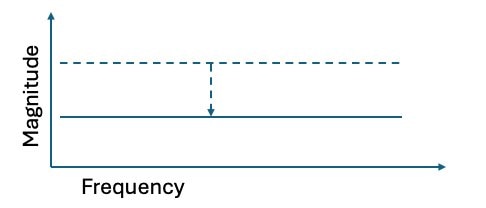 衰减器是射频电路组件,用于降低通过它的信号振幅(或强度)。
衰减器是射频电路组件,用于降低通过它的信号振幅(或强度)。
衰减器是一种射频电路组件,用于降低通过它的信号振幅(或强度)。衰减器的作用与放大器相反,它不是增大信号功率,而是降低。虽然这似乎有悖直觉,但降低信号功率是有道理的。具体原因包括:在处理链中匹配信号电平、扩展动态范围、阻抗匹配和信号校准。射频滤波器通常只会降低某一频率范围内的信号强度,而衰减器则可以在整个频谱范围内降低信号强度。
平衡不平衡转换器(巴伦转换器)
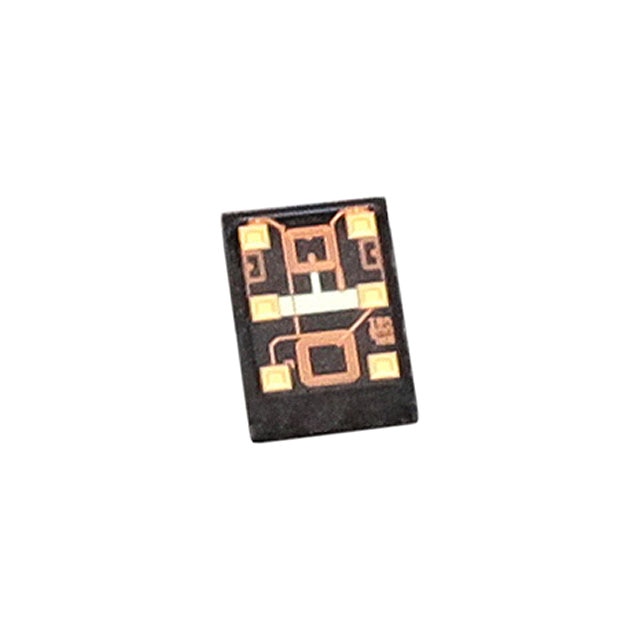 图中所示平衡组件的顶盖已取下,可以看到两个变压器回路,一个浮动,一个接地。
图中所示平衡组件的顶盖已取下,可以看到两个变压器回路,一个浮动,一个接地。
平衡不平衡转换器(平衡至不平衡负载转换器的简称)是一种射频电路组件,可在不影响平衡或不平衡电路阻抗的情况下将这两种电路连接起来,将差分信号转换为单端信号,反之亦然。平衡并不平衡转换器可建模为一个简单的双绕组变压器,其中不平衡侧接地,变压器的另一侧浮动。
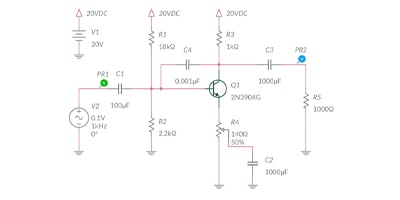
What is the purpose of the emitter bypass capacitor in the Common Emitter (CE) amplifier?
The Common Emitter (CE) amplifier’s emitter resistor is one of several key components used to set the gain of the amplifier stage.








